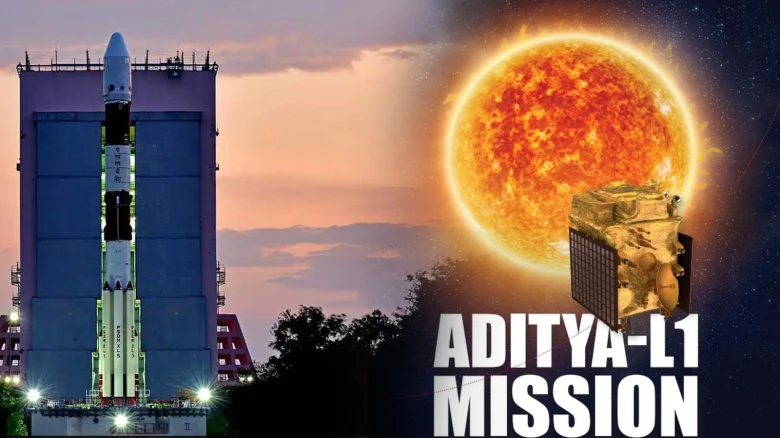The Aditya-L1 mission, named after the Sanskrit word for the Sun, will take off from the second launch pad at...
Digital Desk: Just days after marking a historic achievement with the successful Chandrayaan-3 Moon mission, the Indian Space Research Organisation (ISRO) is preparing for another ambitious journey, this time setting its sights on the Sun. On Saturday, ISRO's trusted Polar Satellite Launch Vehicle (PSLV) will embark on a 125-day voyage to launch the Aditya-L1 mission, which aims to unlock the secrets of our nearest star.
The countdown for the launch of Aditya L1 onboard PSLV C57 began on Friday at Andhra Pradesh's Sriharikota, home to the Satish Dhawan Space Centre, where scientists and engineers have been diligently working towards this momentous event.
Top Updates on ISRO's Aditya-L1 Solar Mission:
1. Launch Timing: The Aditya-L1 mission, named after the Sanskrit word for the Sun, will take off from the second launch pad at Satish Dhawan Space Centre at 11:50 AM on Saturday, less than two weeks after the Chandrayaan-3's Vikram lander successfully soft-landed on the Moon's south pole.
2. Mission Duration: ISRO Chairman S. Somanath stated that the Sun mission will require 125 days to reach its intended orbit around the Sun-Earth Lagrangian point (L1), approximately 1.5 million kilometers from Earth.
3. L1 Advantage: The mission's focus on L1 is strategic, as it provides continuous observation of the Sun without encountering any solar eclipses. L1 is a unique point in space where gravitational forces between the Sun and Earth are in equilibrium, allowing objects placed there to remain relatively stable.
4. Launch Preparation: Following its launch on September 2, Aditya-L1 will remain in Earth-bound orbits for 16 days, undergoing five crucial maneuvers to gain the necessary velocity for its journey.
5. Trajectory to L1: Afterward, the mission will undertake a trans-Lagrangian1 insertion maneuver, commencing its 110-day trajectory to reach the L1 Lagrange point.
6. Mission Orbit: Upon reaching L1, another maneuver will secure Aditya-L1 into an orbit around this gravitational balance point, where it will carry out its mission for the foreseeable future.
7. Scientific Significance: ISRO noted that the Sun, being the nearest star, offers a unique opportunity for in-depth study, shedding light on not only our Sun but also other stars within the Milky Way and various galaxies.
8. Primary Payload: The Aditya-L1 mission's primary payload, the Visible Emission Line Coronagraph (VELC), will transmit 1,440 images per day to ground stations for analysis once it reaches its intended orbit. VELC, described as the "largest and technically most challenging" payload on Aditya-L1, underwent integration, testing, and calibration at the Indian Institute of Astrophysics CREST (Centre for Research and Education in Science Technology) near Bengaluru, with substantial collaboration from ISRO.
9. Mission Objectives: The Aditya-L1 mission's objectives include a comprehensive understanding of the solar atmosphere, distribution of the solar wind, and temperature anisotropy, among other critical aspects of the Sun's behavior.
10. Spiritual Preparation: In a tradition that has now become a part of ISRO's missions, Chairman S. Somanath visited the Chengalamma Parameshwari Temple in the Tirupati district on Friday to offer prayers ahead of the Aditya-L1 mission's launch. He had previously visited the temple before the Chandrayaan-3 mission as well.
The Aditya-L1 mission marks yet another significant milestone in India's space exploration journey and underscores ISRO's commitment to advancing scientific knowledge while pushing the boundaries of space exploration. As the PSLV-C57 prepares for liftoff, the world watches in anticipation, eager to learn more about our Sun and the secrets it holds.

Leave A Comment